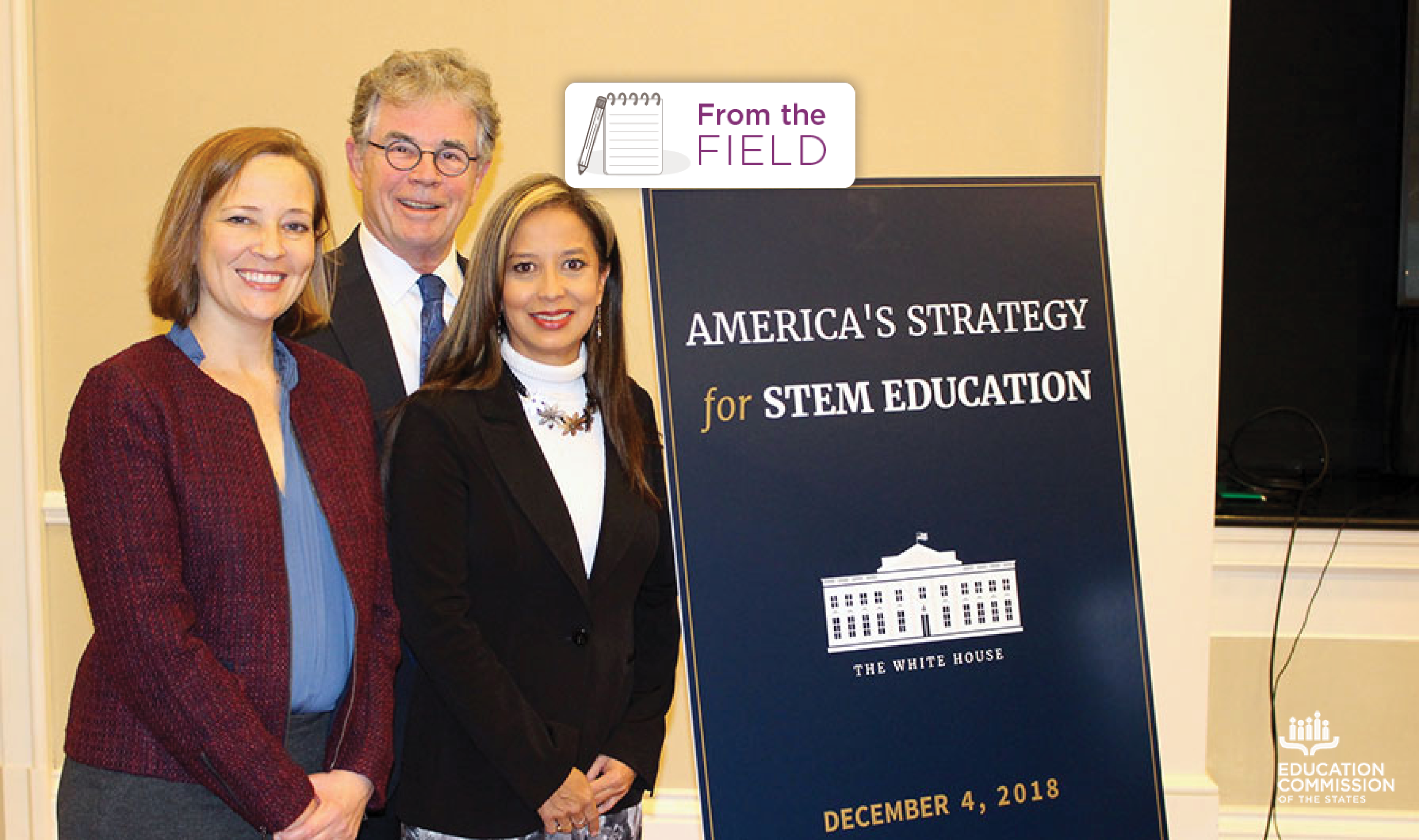In December, the White House released the latest federal five-year strategic plan for science, technology, engineering and mathematics. It articulates a federal strategy for STEM education with three goals:
- Build strong foundations for STEM literacy.
- Increase diversity, equity and inclusion in STEM.
- Prepare the STEM workforce for the future.
At a time when relatively few states have a strategic plan for K-12 STEM education — yet representatives of education and business/industry are both calling for greater student exposure to high-quality STEM experiences — this strategic plan may provide a helpful starting point for fruitful state discussions. In the absence of a state strategic plan, the STEM policy landscape is a jumble of well-intentioned but random, unconnected efforts, with the potential to create inefficiencies or duplication of effort, or gaps in student access to high-quality programs and instruction.
However, the new federal strategic plan indicates it “is intended to serve as a ‘North Star’ for the broader community to help achieve the goals, pathways, and objectives” it sets forth. The federal plan also provides a common language for states should they choose to pursue interstate collaboration on any specific objectives in the plan. For example, many states have computer science initiatives underway. The objectives under the Build Computational Literacy pathway provide a framework for state collaboration on any number of fronts related to computational literacy — saving time, money and effort.
A couple things in the plan stand out:
- Mention throughout of early exposure to STEM: This is particularly encouraging considering the strategic plan goals of equity, inclusion and preparing the future workforce. High school is too late to start if we’re talking about high-quality STEM experiences for every student.
- The commitment to operating with transparency and accountability: So often – and rightly so – policymakers want to know which state programs have the greatest impact, particularly among students underrepresented in STEM. Reporting STEM participation among underrepresented populations, using common metrics to measure progress, and ensuring program performance and outcomes are publicly available will make it possible for policymakers to replicate the most effective programs and make course corrections on less impactful approaches.
However, states should be aware of the challenges they may face in developing a strategic plan for STEM. Just a few examples:
- Priority-setting: The new federal plan sets forth nine topical objectives related to the three educational pathways — strategic partnerships, the convergence of disciplines, and computational literacy — plus five additional objectives related to the Operate with Transparency and Accountability pathway. If states use the federal plan as a template, how will they determine which objectives they’ll tackle in the short term versus the next one to two years — and which, if any, might be too great a stretch on vision and resources to address in the foreseeable future? How will states determine whose are the right voices around the table to be making those decisions?
- Consensus-building: Beyond the consensus-building necessary to identify short- and long-term priorities for a state-level strategic plan for STEM, what consensus-building is necessary among various government, education, nonprofit and private partners for faithful implementation of the state plan at the state and local levels?
- Coordination, funding and evaluation: As pointed out in A State Policymaker’s STEM Playbook, a successful state-level STEM program requires statewide coordination, adequate and reliable funding and quality assurance/program evaluation. Without just one of these three elements, the most well-thought out state STEM plan is unlikely to achieve its hoped-for results. Are states that are missing one or more of these three components ready to make the necessary financial and human resources commitments to give their plans the greatest chances of success?
Here’s to a 2019 full of productive state STEM-planning based on the foundation the new federal strategic plan provides!
Photo credit: White House Office of Science and Technology Policy








